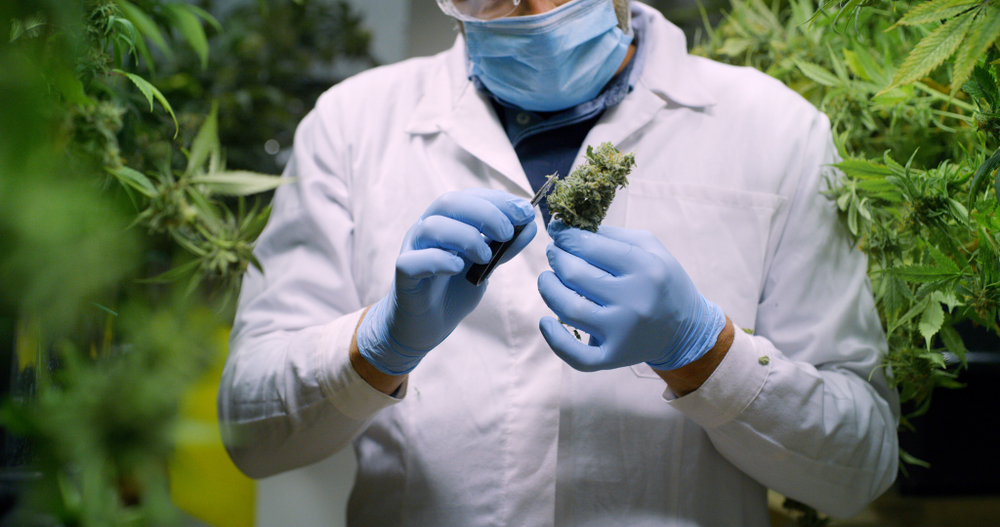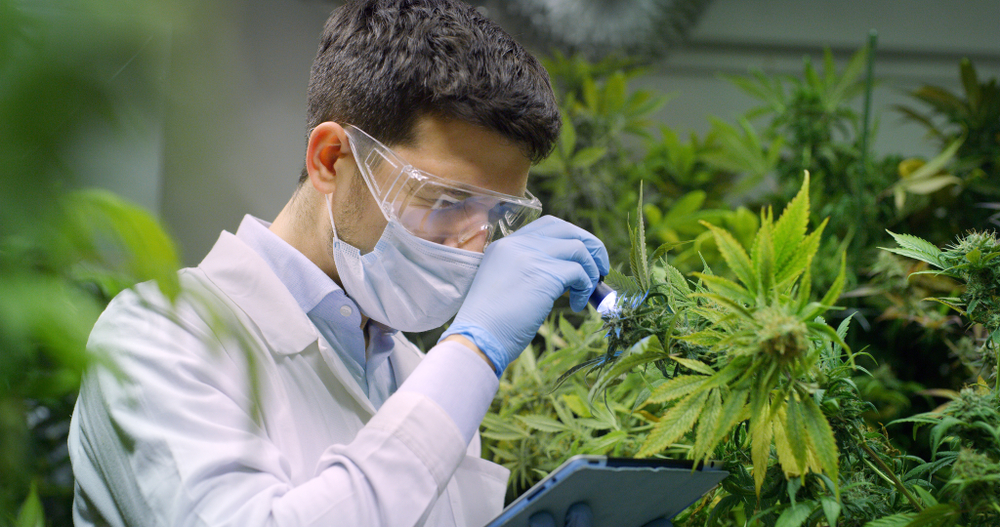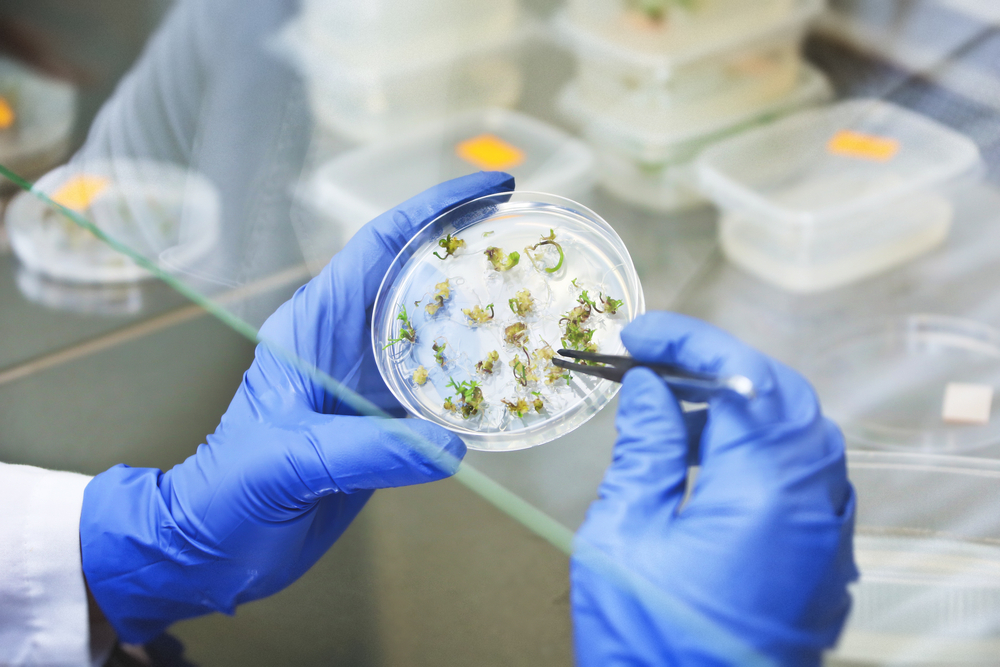THCP, also known as tetrahydrocannabiphorol, might sound like a mouthful but its potency and benefits for health could make it a household name!
THCP, which is called trans-Δ9-tetrahydrocannabiphorol scientifically. Is a naturally occurring cannabinoid that’s recently been discovered by cannabis researchers and scientists.
While researchers are discovering new cannabis cannabinoids and compounds almost every day, THCP is exciting both the cannabis and scientific community for its potential to be 3x to 33x more potent than THC!
Okay, so THCP has the potential to overshadow THC in its potency, but what is it really, and how can you get your hands on it?
Here’s everything you need to know about THCP and its potential effects!
What is THCP? Does THCP Get You High?

There is a new major player in the vast world of molecules of plants. Scientists found that among the significant variability of molecules produced by medicinal cannabis, there is one that has the potential to go far beyond the fame achieved by tetrahydrocannabinol (THC). It seems like the more scientists research cannabis, the more they’re discovering about the plant, which paves the way for more cannabis-based therapies.
This new molecule is THCP, which is short for Δ9-tetrahydrocannabiphorol, and was isolated from a Cannabis plant.
THC and THCP are very similar molecules, with some detail – THCP has two more carbons at the alkyl side chain. No cannabinoids with more than five links had ever been found before in nature previous to this finding.
So one might question, what is the fuzz all about? If you are wondering whether this new cannabinoid would make you high – the answer is yes!
But that isn’t all.
THCP effects also seem to be more effective than its counterpart, THC! So it has potential as a pharmacological agent.
The “tail” observed in the chemical structure representing an alkyl side chain is crucial for the binding affinity of the phytocannabinoid to cannabinoid receptors 1 (CB1) and 2 (CB2). In other words, this structure helps cannabinoids bind to the body’s endocannabinoid receptors to get us high!
In fact, the longer the side chain, the higher the affinity for these CB receptors, or the higher the psychoactive effects. It is with no surprise that when researchers stumbled upon the finding of an alkyl chain with seven carbon atoms, they knew it was worth further investigating this molecule.
How Was THCP Discovered?

This discovery of THCP is thanks to a group of Italian researchers involved in the UNIHEMP research project or the “Use of industrial hemp biomass for Energy and new biochemicals production.” This group, authorized by the Italian ministry of health. Led by researcher Giuseppe Cannazza. discovered the THCP in a medicinal cannabis cultivar supplied by the Military Chemical-Pharmaceutical Institute in Florence.
These Italian scientists were able to identify two minor cannabinoids. THCP and CBDP (cannabidiphorol) – and isolate them from the remaining extracted mixture containing other cannabinoids.
The study aimed at isolating and quantifying these molecules in the cannabis strain, thanks to advanced analytical techniques currently available. Briefly, THCP and CBDP were synthetically produced in the lab.
Using a technique, mass spectrometry. the two novel compounds were matching with the properties of their counterparts.
Afterward, they decided to focus on THCP and characterize its binding affinity to the cannabinoid receptors and pharmacological effects in mice.
Research in this field is crucial to shed light upon unknown compounds in cannabis extracts and to understand how cannabinoid and terpenes profiles in weed deliver their effects.
Are these so-called minor phytocannabinoids the reason why treatments with the same THC concentration lead to such different results? So far, it is a question with no clear answer. However, there has been some debate arguing that this interaction can lead to the “entourage effect.”
From Research to Reality
The article became popular among both the scientific and the general community. It is ranked 47th of the 14,751 tracked articles of a similar age in Scientific Reports. The altimetric paper analysis can be found here.
The goal of these researchers is now to establish the chemical profiling of the naturally occurring cannabinoids already in cannabis plants. This leaves it for the cannabis industry to explore the potential of each novel cannabinoid.
After only two years, THCP-containing products are already on the market.
Some products are oil-based and contain almost no other minor cannabinoid. While others take the form of vapes containing a mixture of cannabinoid molecules, among which is THCP.
Is THCP legal? – one might naturally ask. The answer of course depends on where you are reading this from and the laws applicable to this controlled substance. Bear in mind that although THCP is a natural product, it is considered a THC analog, so different laws might apply in different countries.
What is THCP Good For?
It is still unclear how psychoactive is THCP in the human body and what its benefits really are. However, scientists speculate that THCP shows similar biological activity to other naturally occurring cannabinoids, such as THC, but with greater efficacy.
Differences between these two cannabinoids seem to relate to their potency and the duration of their effects. THCP shows several benefits that put it on the top of the list of promising phytocannabinoids:
Potency
Yes, it is true. THCP is a more potent molecule than THC, which means you need lower doses to produce the same psychoactive results.
The studies conducted by the group of Italian scientists mentioned above showed that THCP has an approximately thirty-fold higher binding activity for the CB1 receptor than the levels reported for THC by previous works.
CB1 and CB2 receptors take part in various physiological processes, including appetite, pain sensation, mood, and memory. Therefore, THCP could be more potent than THC at binding with the ECS. At least two to thirty three times more potent!
Pain Relief
THCP’s pharmacological effects and subject response were tested on mice by evaluating several parameters after treatment with either THC or THCP. The tests indicate that THCP treatment decreased mice’s locomotor activity and body temperature!
Also, THCP-treated mice showed higher resistance to pain caused by heat. Indicating a putative application for this new cannabinoid as an analgesic. Higher doses of THC were required to produce the same effects.
Anti-epileptic
THC and CBD have been in numerous preclinical studies to diminish the duration, severity and incidence of epileptic seizures. However, THCP’s pharmacological effect on humans is yet to be studied. Regarding the characteristics of THCP of high affinity for CB1 binding and overall high cannabimimetic activity. THCP products molecule holds the promise for new compounds with anti-epileptic activity, among other neurological diseases.
THCP – Unbound Potential
With its massively increased potency and variety of health benefits. THCP has the potential to completely revolutionize the cannabis industry and change the way weed enthusiasts consume cannabis products.
However, research into this new cannabinoid is still in its early stages so while these findings are extremely exciting. It’s still too early to say for sure whether or not its benefits are beneficial. Nevertheless, the cannabinoid is another exciting opportunity to dive deeper into the holistic benefits of cannabis.
If you want more information on other minor cannabinoids, be sure to check out our other articles below!
- CBG – Cannabigerol
- THCV – Tetrahydrocannabivarin
- CBDA – Cannabidiolic acid
- THCA – Tetrahydrocannabinolic acid
- CBN – Cannabinol
- CBC – Cannabichromene

